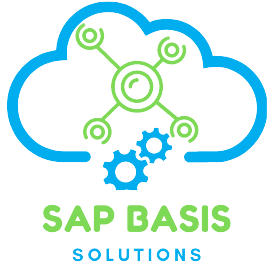SAP Basis Support Service: Role and Importance in an Enterprise

Overview of SAP BTP Role Management
SAP BTP Role Management refers to the administration of user roles, permissions, and access rights within the SAP Business Technology Platform. It governs what users can and cannot do across various services such as SAP Integration Suite, SAP Extension Suite, SAP HANA Cloud, and other cloud-based tools.
Unlike traditional ABAP-based role management, SAP BTP introduces a more dynamic, service-oriented approach. It involves assigning roles through the SAP BTP cockpit, using sub accounts, directories, and entitlements. The structure is modular and flexible but also introduces complexities in multi-tenant or hybrid environments.
Key concepts in SAP BTP Role Management include:
The challenge lies in balancing security, scalability, and clarity especially when multiple services, regions, and user groups are involved. This is especially relevant for enterprises in the Gulf Cooperation Council (GCC) countries such as Saudi Arabia, UAE, and Qatar where multi-tenant cloud architecture is rapidly expanding.
Best Practices for Implementing Role Management in SAP BTP
Implementing effective Role Management in SAP BTP requires planning, consistency, and the use of automation where possible. Here are key best practices for 2025:
- Adopt a Role Design Strategy Early: Define role templates and collections before onboarding users or enabling services. Use naming conventions and document all access scenarios.
- Use Role Collections Over Individual Roles: Group roles into collections based on job functions or responsibilities. This simplifies administration and aligns with SAP BTP’s design model.
- Leverage Identity Authentication Service (IAS): Integrate with external identity providers and centralize authentication using IAS or third-party systems like Azure AD or Okta.
- Automate Role Assignments: Use scripts or CI/CD pipelines to provision roles in Dev, Test, and Prod environments. This improves consistency and reduces manual errors.
- Document and Review Regularly: Keep an updated role matrix. Schedule periodic audits to remove inactive users or outdated role collections.
- Apply Least Privilege Principle: Avoid assigning unnecessary administrative roles. Always limit access based on what is required to perform specific tasks.
- Monitor with Cloud Identity Services: Use tools like SAP Cloud Identity Access Governance for better visibility and risk analysis.
These practices help build a scalable and secure foundation for Role Management in SAP BTP. To explore how our experts can assist with implementation, visit our SAP BTP services page. They are especially beneficial for organizations in the MENA region, where local compliance and enterprise security standards demand clear and traceable access control.
Enhancing SAP Security through Effective Role Management
Role Management isn’t just an admin task it’s a key pillar of .SAP Security Best Practices Properly configured roles protect your SAP BTP environment from unauthorized access, data breaches, and operational risks.
Here’s how Role Management contributes to better security:
- Access Segregation: Prevents overlap of sensitive roles (e.g., developer + administrator).
- Traceability: With well-documented roles, it’s easier to track who did what, when, and why.
- Integration Security: When connecting to SAP S/4HANA, SuccessFactors, or third-party APIs, roles ensure the correct level of access.
- Auditing: Align role configurations with compliance standards such as GDPR, ISO 27001, or SOC 2.
In 2025, SAP administrators, particularly those operating in regulatory-sensitive markets like Saudi Arabia, UAE, and Qatar Must treat SAP BTP Access Control as a proactive security strategy, not just a setup step.
Future Trends in SAP BTP Access Control for 2025
Looking ahead, SAP BTP Access Control is expected to evolve in the following ways:
- AI-Driven Role Recommendations: Expect BTP to incorporate machine learning to suggest optimal roles based on usage behavior and peer analysis.
- Policy-Based Access Control (PBAC): Moving beyond role-based models, SAP BTP may adopt PBAC for more granular, context-aware access decisions.
- Increased Integration with Enterprise Identity Providers: Tight integrations with Azure AD, GCP IAM, and AWS IAM will be more common, enabling unified access control across cloud landscapes.
- Zero Trust Security Frameworks: SAP will likely align with Zero Trust principles, enforcing identity verification for each access request and reducing reliance on static roles.
- Automated Compliance Auditing: Built-in compliance tools will monitor role assignments and access logs to ensure continuous alignment with regulations.
By staying updated with these trends, SAP professionals in the Gulf region and beyond can future-proof their role management strategies and ensure secure, agile operations.
Conclusion
SAP BTP Role Management is not just about granting accessit’s about enabling agility, enforcing security, and ensuring compliance in complex digital environments. By applying the best practices outlined above and staying attuned to upcoming trends, SAP professionals especially those in Saudi Arabia, UAE, and Qatar, can turn role management into a strategic advantage for 2025 and beyond. If you’d like expert guidance tailored to your environment, get in touch with us.
